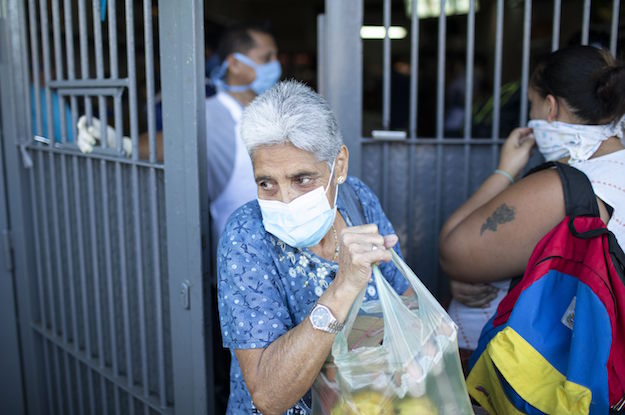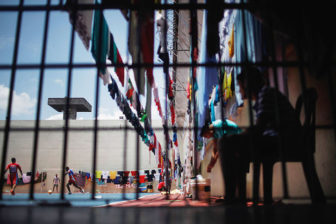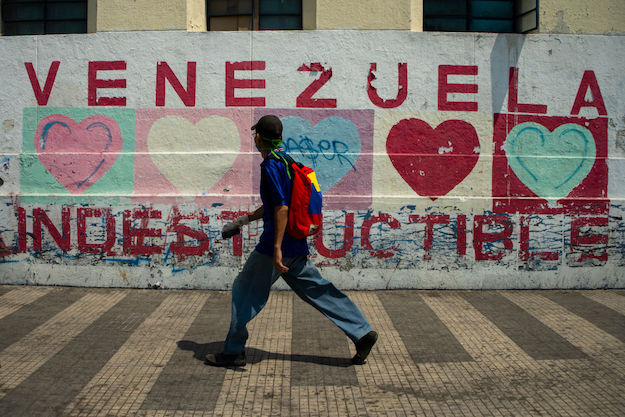Rodrigo Londoño Echeverria, known as Timochenko, became the third Revolutionary Armed Forces of Colombia (FARC) commander in as many years after the Colombian military killed Alfonso Cano in November 2011.
Timochenko has inherited a very different organization than that commanded by his predecessors. Only a little more than 10 years ago the FARC—Latin America’s oldest guerilla group founded in 1964—was a force to be reckoned with. At that time, flush with cocaine cash and with over 20,000 fighters, then-President Andres Pastrana had offered them a peace process and with it a Switzerland-sized swath of the countryside as a “safe zone.” Colombia was, for all intents and purposes, on the verge of becoming a failed state and a FARC military victory was a clear possibility.
But as the peace process moved toward failure, President Pastrana enlisted the help of the United States to the tune of $500 million a year for 10 years for the implementation of Plan Colombia. Plan Colombia, one of the most successful U.S. counter-insurgency efforts ever, focused on building vetted units, special forces units and intelligence structures and providing specific logistical support such as the provision of Black Hawk helicopters.
The efforts paid off and starting around 2003 real changes in the FARC’s approach began to take place. These were documented by emails recovered after the March 2008 killing of FARC commander Raúl Reyes. For one, the geopolitical landscape of the region had shifted. Lieutenant Colonel Hugo Chávez had recently been elected President of neighboring Venezuela; and the FARC had gained their most important international ally. Since the fall of the Soviet Union and the entropy of the Cuban revolution, the FARC had been increasingly isolated internationally. According to the email conversations, Chávez allowed the FARC unprecedented access to his administration and allowed them to use Venezuelan territory as a safe haven.
Just as importantly, the Chávez administration facilitated the FARC’s morphing from a guerilla army to a drug running organization supported politically by a network of civil society organizations across the continent. Political cover is rooted in the São Paulo Forum (FSP)—an organization of leftist political parties founded by Fidel Castro and Luiz Inácio Lula da Silva in 1990. Membership in this organization has given the FARC operating room within some of the more radical of the 13 governments controlled by FSP members.
But the FARC and its allies in the Bolivarian Revolution wanted an organization they wholly controlled, and so in 2003, according to the emails, established the Bolivarian Continental Congress (CCB)—now the Bolivarian Continental Movement (MCB). This organization—with its offices in Caracas—has dozens of affiliated civil society member groups across Latin America. According to the Reyes emails, the FARC has used the MCB and other mechanisms to set up 700 nongovernmental organizations (NGOs) across Latin America. The MCB directly funds much of its activities with drug money.
The second transformation has been the morphing of the FARC from an ideological and political revolutionary movement intent upon seizing political power to the world’s largest cocaine producer with hemispheric reach and beyond. While still publicly couching the justification for armed struggle in revolutionary rhetoric, the FARC increasingly relies on criminal activity for financing including cocaine production, kidnapping and extortion.
Increased military pressure and the loss of virtually all popular support has led the FARC to increasingly engage in criminal activities. According to the UN Office on Drugs and Crime, global cocaine production is between 800 and 1,000 tons a year with the majority of this coming from Colombia. The street value is approximately $80 billion. Of that, the FARC is estimated to receive roughly $300 million a year from the cocaine trade—over 50 percent of its total operating budget.
According to “The FARC Files: Venezuela, Ecuador and the Secret Archive of Raul Reyes”—an analysis provided by the London based International Institute for Strategic Studies—the alliance with President Chávez has also been important, as has the support of the government of Rafael Correa on Colombia’s southern and western borders. As the Colombian military battered the FARC and drove them from the center of the country, the border regions have become vital lifelines, both for the logistical pipelines of the rebels and for the movement of the cocaine they produce.
Chávez has allowed Venezuela to be used by the FARC and other groups as a center for drug transit. According to the U.S. State Department, the flow of drugs through Venezuela increased five-fold during Chávez’s time in office, with 40 percent of global cocaine supply (more than 300 tons) transiting through Venezuela. Venezuela is the hub for cocaine flights into West Africa and Central America (predominantly Honduras, but also Belize, Nicaragua and Guatemala). Seven senior Chávez administration officials have been placed on the U.S. Treasury Department’s Office of Foreign Asset Control (OFAC) lists for providing material support to the FARC and drug trafficking. While there has been a very public rapprochement between Presidents Santos and Chávez, according to Admiral Edgar Cely (former commander of the Colombian armed forces) this rapprochement is mostly political and the FARC and ELN continue to operate in Venezuela with impunity.
These on-the-ground realities mean that Timochenko may be well suited to lead the FARC. A seasoned revolutionary, who studied in Russia and has been part of the FARC for more than 25 years, Timochenko has a long relationship with the Venezuelan leader, reportedly having met with him as far back as in 1998. According to sources, Timochenko has been living in Venezuela; a report that led President Santos to assure on November 21 that “if Timochenko is in Venezuela, Chávez will help us capture him.” This assertion was not echoed by the Venezuelan president.
But clearly the FARC is in decline and Timochenko’s days—like that of his predecessor—are likely limited.








